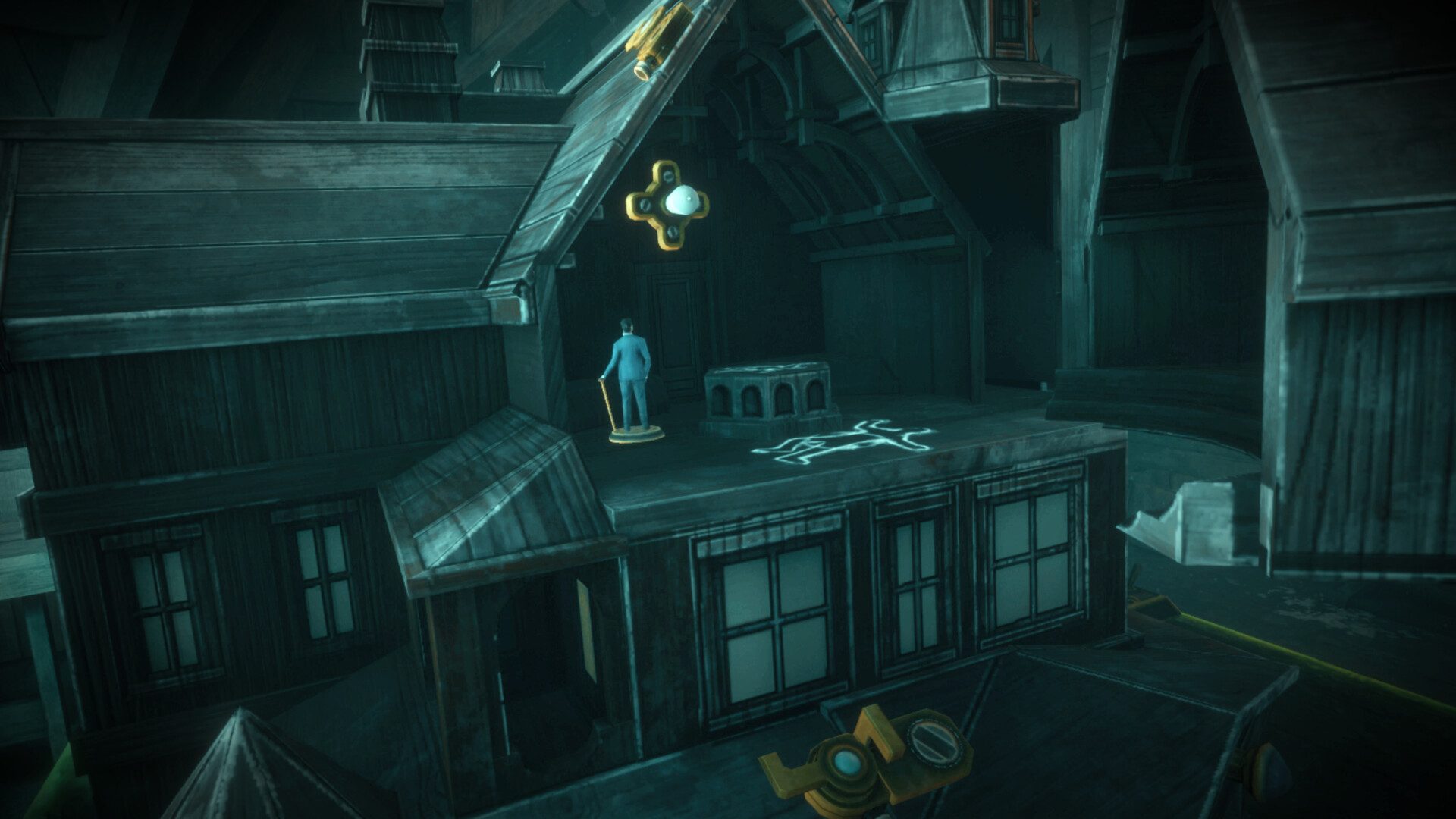When the original The 7th Guest launched on CD-ROM in 1993, it was apparently a pretty big deal. The amount of pre-rendered 3D graphics spliced with live action video clips made it a standout title among all PC games at the time, making it and Myst basically the hottest PC games ever. Now, Vertigo Games is rebooting the interactive horror puzzler in VR alongside a fresh injection of volumetric video which was undoubtedly a highlight in our hands-on.
The 7th Guest is coming in October to all major VR headsets, however we got a chance to go hands-on with a demo specifically for Quest 2 via a Steam build. Having never played the original ’90s game, I don’t have a basis of comparison, although what I did see was pretty indicative that Vertigo Games has done a ton to make this a visually appealing and modern game through and through.
Here’s the setup. Six guests have been welcomed to a foreboding mansion. There’s something sinister at play, as a wealthy recluse and toymaker, Henry Stauf, hides in the shadows. The ultimate question: Who is the 7th Guest? You’ll have to battle increasingly difficult puzzles and keep clear of whatever bumps in the night to solve the mystery.
Here’s the announcement trailer in case you missed it.
In the 25-minute demo, I got a sense of the scale and refinement of the game, although I still have some questions about puzzle difficulty. Don’t worry, I won’t talk about specific solutions here, just general impressions.
Starting outside, I find myself paddling on a canoe to a boathouse where I’m immediately confronted with my first tutorial-level puzzle. My newfound ‘Spirit Lantern’ doesn’t just let me shine light, but also acts as a magical tool to fix the broken planks blocking my way up to the main house. Later, I spawn the Spirit Lantern to materialize hidden objects or repair them, which comes part and parcel with a ‘Spirit Board’, which lets me see a map of the mansion, get hints and solutions, and check out my general progression. These two feel like the main tools I’ll be leaning on throughout the game.

Sparing you some of the minor tutorial puzzles to actually get into the mansion (I made heavy use of the Spirit Lantern), I toss open the gate and walk up into the foyer, play a record on the Gramophone, and receive my first set of ghostly memories.
In general, volumetric video can be hit or miss depending on how it’s woven into a game. Here, it seems like Vertigo Games really hit a homerun, as each little character vignette feels like a visual extension of the haunted mansion, replete with ghostly mist and echo-y voice overs.
The acting is admittedly a little pulpy, but I’d consider the ghostly vignettes the right kind of cheesy considering the ’90s indie lineage the game. It’s supposed to be fun, dare I say, Disney-esque, so it feels right on brand with something you might experience in a haunted mansion theme park ride. I don’t expect any real frights here either—I certainly didn’t have any outside of the atmospheric creepiness of the mansion itself, that is.

Again, I’m not going into puzzle solutions, but the early puzzles I did encounter were interesting, although not particularly difficult. A trio of magic hats create portals to one another, allowing you to put your hand into one, and solve a closed puzzle from afar. Unlock a series of boxes, and you’re led to the next vignette of a magician who met an untimely fate.
Whatever the case, I hope the mechanics I’m learning in the early game will be compounded into more difficult stuff later. It’s still too early to tell if the puzzles are one-off things, which would be more like a smorgasbord approach (which is fine) than requiring the player to create specific skills and use them at opportune moments.

I came away mostly intrigued by The 7th Guest in my short time going hands-on with the demo, although there’s clearly one thing that I can say I don’t like about it out of the gate. Voiceovers during puzzles that are designed to be constantly ‘helpful’ typically overstay their welcome, and I was hoping whoever the hell was talking while figuring out puzzles would eventually stop. These can be turned off in the settings, although they are on by default. Hopefully in the full game this will be offered as a starting option so players don’t feel like they’re being unnecessarily held by the hand from the get-go.
As for comfort, the gamut of standard options is available: teleportation, free movement, and a mix of both, which is the default movement style. The game can be played standing or sitting, and with support for left or right dominant hands.
Whatever the case, Vertigo Games is one of those VR pioneers that has more experience both in and outside the genre than most, and it seems they’re hitting all of the quality bars you’d expect from a VR remake of such a beloved ’90s game. Maybe I’ll play the original while I wait to play the full game, which is slated to launch October 19th this year.
This article was originally published on roadtovr.com